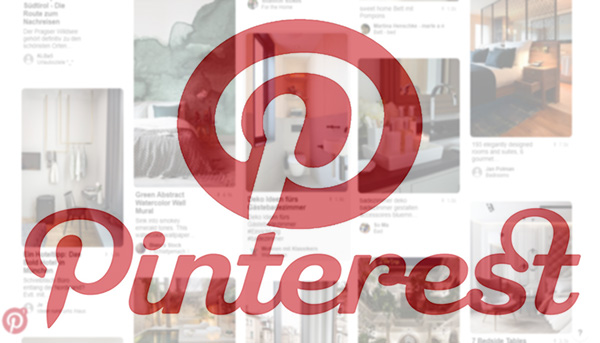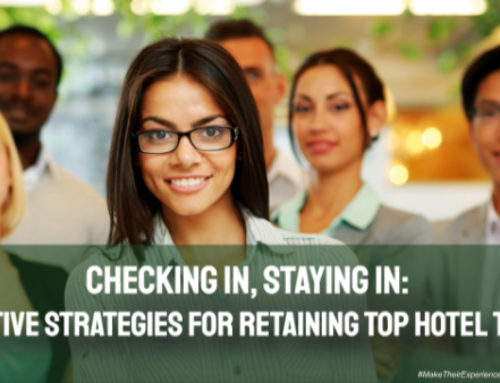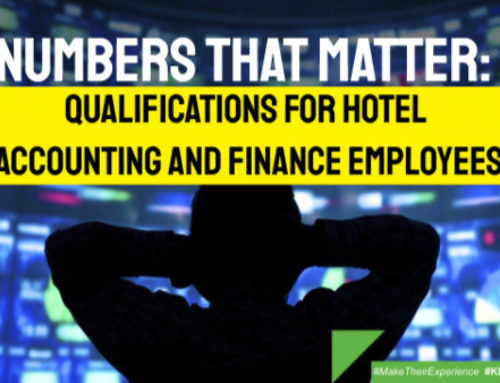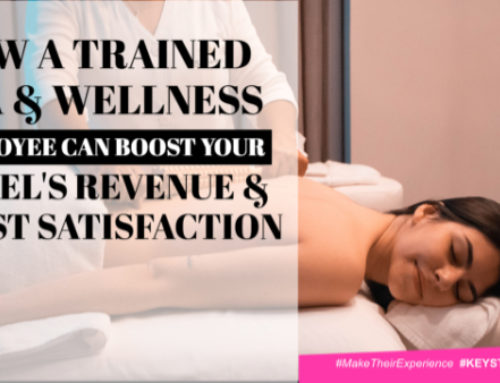.
.
The impact of Pinterest is growing every year and gives a property the opportunity to share its personality, values and the best it has to offer but is it right for your property?
In this edition, I’ll explain how Pinterest works.
Welcome to another edition of hospitality property school.
I am your instructor, Gerry MacPherson.
.
Pinterest it is a collection of pictures that show up on a board.
.
The pictures or images are called “pins” which are visual bookmarks. All the images uploaded can link back to their original location. This allows many people to share the same pin or image with their own commentary while still linking back to the original content.
.
.
Who uses Pinterest?
In order to determine if using Pinterest for your business is a good fit, it’s helpful to have an understanding of who exactly is logging into the social media platform and what makes them tick.
.
- 81% of Pinterest users are Females.
.
- 40% of New Signups are Men; 60% New Signups are Women.
.
- Men account for only 7% of total pins on Pinterest.
.
- Millennials usePinterest as much as Instagram.
.
- The median age of a Pinterest user is 40, however, the majority of active pinners are below 40.
.
- Half of Pinterest users earn $50K or greater per year, with 10 per cent of Pinteresting households making greater than $125K.
.
Though Pinterest’s user base isn’t nearly as large as that of Facebook, Instagram, or YouTube, it’s important to keep in mind that the users are deeply engaged.
.
.
Setting up a Pinterest account for your business
If you plan to use Pinterest to market your property, you should create a Pinterest business account, rather than a personal account. Business accounts offer business-specific features like analytics and the ability to use Pinterest advertising.
.
.
Step 1: Create your Pinterest for business account
.
.
Step 2: Complete your profile
Now you need to fill in your profile details to make your brand appealing and credible.
.
Log into your new Pinterest account
.
upload a profile photo (optimal size: 165 x 165 pixels), complete the About you section, and add your business location.
.
Give as much information as you can. Choose an image that best represents your property, such as a logo. Make sure to add your website so users can visit you through it.
.
Always try to use keywords in your “about me.”
.
.
Step 3: Confirm your website
Confirming your website allows you to see what people Pin from your website, and adds your logo to any Pins made from your site. Confirming your website will also boost your Pins’ rankings in search results.
.
.
Step 4: Create boards
Now that your account is ready to go, you need to start sharing and organizing content so that Pinners will have a reason to follow either your entire account or one or more of your boards.
.
Enter a clear description of what you’ll save to your board, and choose an appropriate category. If you want to start saving Pins to your board but you’re not ready for people to see it yet, you can choose to make the board secret until it’s ready to go.
.
.
Step 5: Start Pinning
Now that you have your boards set up, it’s time to add some Pins. The easiest way to save to Pinterest quickly is to install the Pinterest browser button, which allows you to Pin anything from the web with just a couple of clicks.
.
.
That’s it. You’ve successfully created your Pinterest for business account.
.
.
.
.
How to Create a Pinterest Strategy for Your Hospitality Property
.
Personalizing your brand
Pinterest is an extremely casual platform where people write and pin candidly. This is a wonderful opportunity to integrate a more personalized brand voice into your business Pinterest page. Shed your polished image and get to know your customers — they’re the ones repinning and following you!
.
This is also the ideal place to dip your toe into some brand marketing research — put your feelers out and take note of what you notice trending on your competitors’ pages and which pins perform the best.
.
.
Boards About Your Property
First, create boards that are directly related to your hospitality property and destination. Name your first board after your property.
.
Fill your property board with images from your website and any other images from the photo shoot. Photos do best when they are clear and bright, so make sure to upload only quality images
.
.
Boards About Your Region
Second, create a board that focuses on your property’s region. You could showcase information on the most popular local attractions, restaurants, etc.
.
.
Property Details Board
Next, get specific about your property. Create boards for your restaurant, bar, spa, gift shop, any specials you offer.
.
.
More Ideas
Now, create boards that showcase what makes your property different.
.
- Architecture
.
- History
.
- A wedding destination
.
- Family getaway
.
- Boards where guest can contribute
.
.
Use Google Analytics
You can use tools like Google Analytics to understand the things your guests are interested in. This will help you come up with content ideas for your Pinterest boards. It will take a few weeks for Google to gather useful information.
.
Once it has collected enough data, you can find audience information inside. After logging in, you can click audience on the left-hand panel. You can get information such as age, gender, and interests.
.
If you need help, Pinterest offers great getting started guides for businesses to get them started. They highlight what you should pin to give the best experience, how to curate and inspire your audience.
.
.
Show What Inspires You
Take your pins beyond your products. For travel, this could mean showcasing travel destinations that have inspired your hospitality property. Hospitality brands, more than anything, are inspired by your love of culture and travel.
.
.
Curate Your Collection
Pinterest’s suggests beautiful images to specific boards. Topic-focused boards do better than general boards. Users like to know exactly what they should expect from following any given board.
.
.
Authenticity Matters
Your Pinterest should be used to display your brand’s personality and values. Showcase what you’re all about and drop what you’re not. Hospitality brands are often fueled by passion, so focus on how and what got you to this point. Don’t try to be anything you’re not and focus on what matters to your guests.
.
.
.Is this making sense? Let me know by leaving a comment below
.
.
Tips and tactics you may want to consider
.
1. Add save buttons to your site
If you want people to take action, you’ve got to make it easy for them to do so. Since adding a save button to your website allows people to Pin your content with just a click, even if they don’t have the Pinterest browser button installed, it should be no surprise that doing so can quintuple the number of content Pinners save from your site.
.
.
2. Pin consistently
Pinterest recommends that you Pin something at least once per day, during peak times. Pinterest also highlights that consistency is key.
.
If you’re creating Pins to coincide with an upcoming holiday, season, or event, you should start posting them about 45 days in advance.
.
.
3. Focus on great visuals
Pinterest is a highly visual medium, so it’s worth the effort to create quality imagery. Your photos should be clear, well-lit, well-composed, and—most importantly—in focus.
.
Adding a few words of text to your images can help give an immediate idea of what the linked content is all about.
.
Keep in mind that you can create multiple Pins with different images that point to the same webpage. This is not only allowed, but encouraged since different images can appeal to different audiences.
.
.
4. But don’t neglect the words
I just told you that Pinterest is a visual medium—but great visuals alone are not enough to create serious engagement. Make the most of the description field to tell viewers exactly what they will get if they click through to the linked content on your site. Make sure to include your most important keywords to help your Pins appear in search (but, of course, be sure to do this in a natural and helpful way rather than engaging in keyword stuffing).
.
.
5. Use Rich Pins when appropriate
Rich Pins are enhanced Pins that use metadata pulled from your site to provide extra information about what Pinners will find when they click on a Pin. Rich Pins are available for apps, recipes, products, and articles—in other words, they are almost certainly applicable to the content you are Pinning or hoping that others will Pin from your site.
.
.
6. Get social
Pinterest is a social network, not a billboard. If you want people to engage with your Pins, you’ll need to be engaged yourself. Follow boards or accounts from relevant but non-competitive brands in your industry, and make sure to actively like and engage with Pins related to your niche.
.
.
7. Use analytics to improve results
Pinterest Analytics provides important information about what types of content perform best on the network, so you can tweak and improve your Pinterest for business results over time. You’ll be able to see which Pins are most popular and which drive the most traffic to your site, so you can focus on the metrics that matter most to your particular business.
.
.
8. Try Pinterest Promoted Pins
Promoted or Pinterest ads are a great way to get your Pins seen by more people, creating new exposure for your brand..
.
.
9. Make your Pins more accessible
Pinterest is a hyper-visual platform, relying heavily on images to establish context and meaning.
.
This has meant that users with certain disabilities, low visibility, or those in need of screen-readers struggled to use the platform, even more so than they do on other platforms like Facebook or Twitter, which are more text-focused.
.
Here are some of the ways you can do this:
.
- Add context through your descriptions.
.
- Use strong typography
.
- Make sure the text is large enough that it can be read
.
- Incorporate colour contrast
.
.
10. Try Pinterest’s Buyable Pins
Promoted Pins are doing exceptionally well, and buyable pins are driving major conversions.
.
.
11. Try a Promoted Video campaign
Pinterest recommends using video when your brand has a clear story to tell. Pinterest’s research shows that people watched Promoted Videos 32% longer when there was a storyline that built over time, compared to GIFs or stitched-together stills.
.
.
In Conclusion
Pinterest can be a lot of fun and their algorithm is formidable, making the experience new and different every time.
.
There are many travellers on Pinterest and they are looking to be inspired. Your property can be the inspiration for them to a book a trip to stay with you and visit your destination. If you are using Pinterest correctly, it can be a significant source of traffic to your website, a source of bookings and increased profits.
.
.
⇒ TO READ OR LISTEN TO THIS EPISODE ON KEYSTONE ⇒ TO READ OR LISTEN TO THIS EPISODE ON KEYSTONE HOSPITALITY PROPERTY CONSULTING:
https://keystonehpd.com/KHDC136
.
.
⇒ And don’t forget to join the “6 Day Challenge” here:
.
.
RESOURCES & LINKS MENTIONED IN THIS EPISODE:
.
“Getting Started with Pinterest for Your Property” download
https://keystonehpd.com/benefit-from-pinterest
.
.
The Keystone HDC Training Tutorials
https://courses.keystonehospitalitydevelopment.com/
.
.
Join our community in “The Hospitality Property School Group” –Check it Out for One Full Week for Only $1
https://keystonehpd.com/membership-site
.
__________
TWEET THIS VIDEO:
“Pinterest for Your Hotel or Bed and Breakfast” Video @KeystoneHDC
__________
.
Say hi on social:
Facebook: https://www.facebook.com/KeystoneHDC
.
Twitter: https://twitter.com/KeystoneHDC
.
Linkedin: https://www.linkedin.com/company/keystone-hospitality-development
.
.
Listen to The Hospitality Property School Podcast here:
https://keystonehpd.com/itunes-podcast
https://www.stitcher.com/podcast/hospitality-property-school
.
.
YouTube






